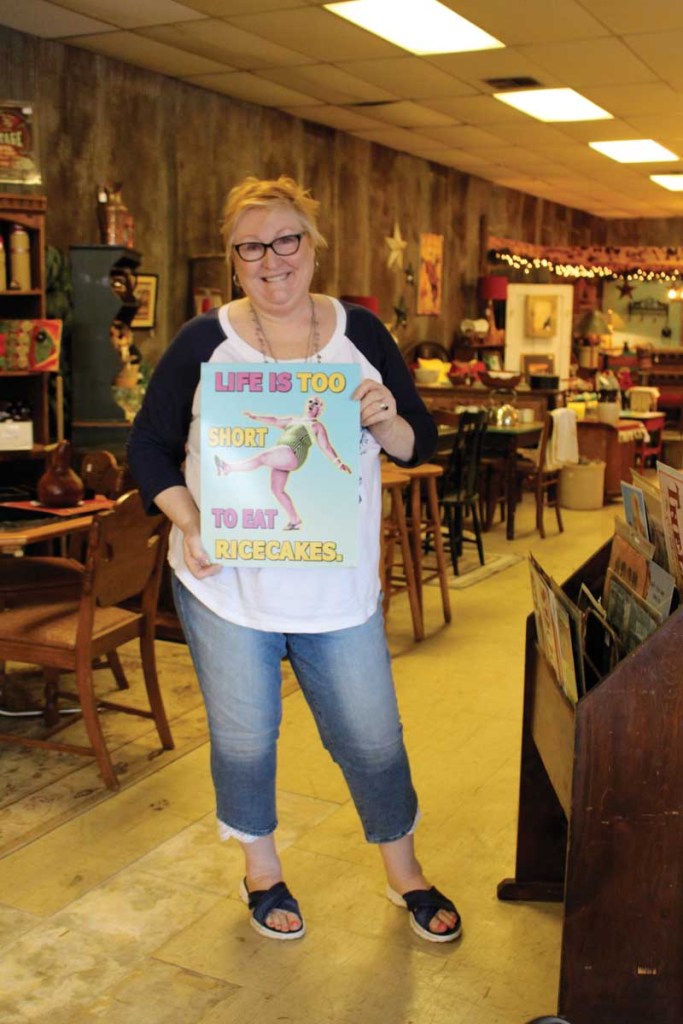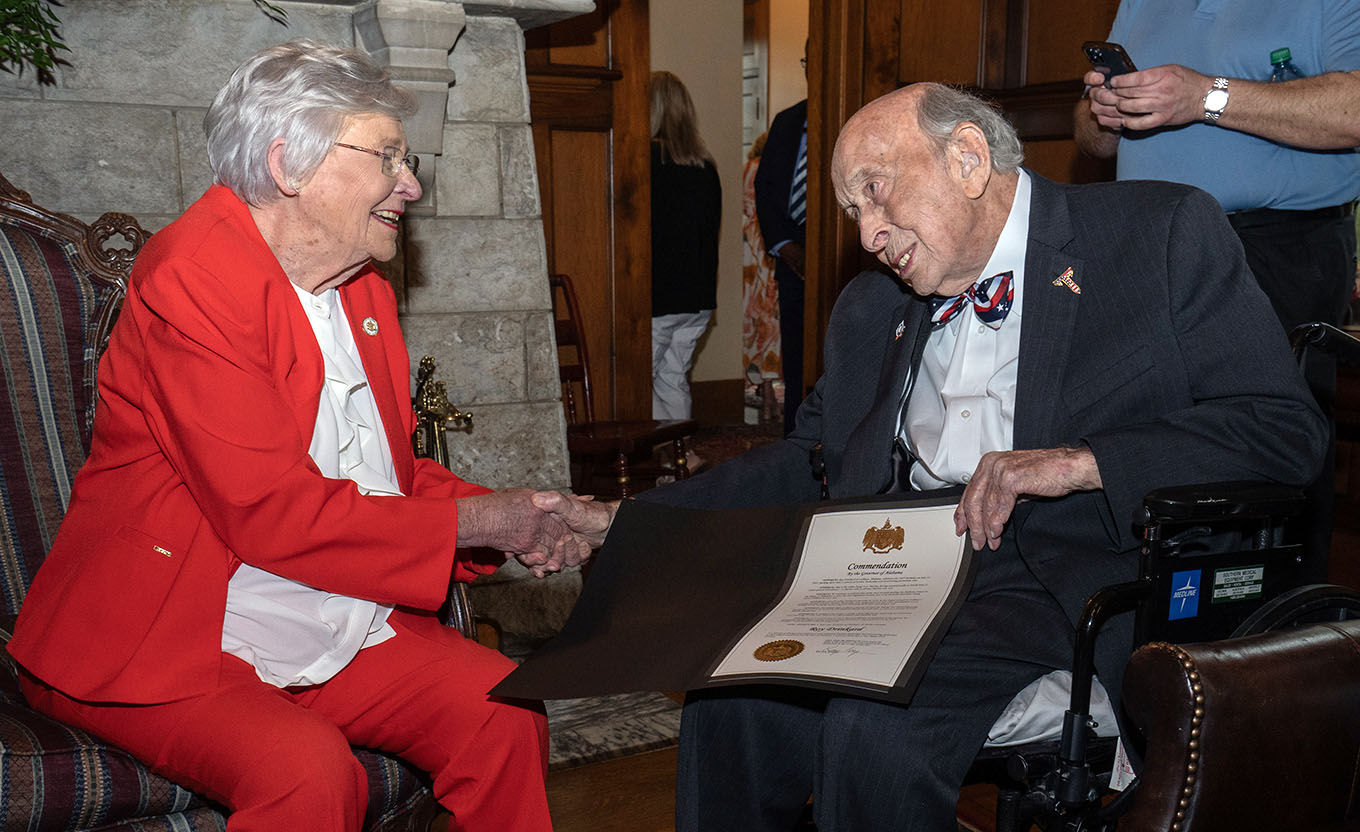Oklahoma woman recalls time with followers of notorious killer Charles Manson
Published 2:15 pm Thursday, May 12, 2016

- Theresa Borden-Mitchell showing off one of her favorite signs in her store, Picket Fence.
ADAIR, Okla. — Theresa Borden-Mitchell is a collector of stories and experiences. She herself is a colorful character, full of anecdotes of a life well-lived.
To the surprise of most, one of her stories has a murderous connection.
Trending
In the late 1960s, the country was reeling from news of Helter Skelter and other killings that Charles Manson and his “Family” of followers in California wrought. Mitchell, a recently single mother in eastern Oklahoma at the time, found herself in need of a good-paying job.
The austere women’s prison, California Institution for Women, was a far cry from the life she was living with the bra-burning, long-haired children of her generation. The boot camp style training for the job, she said, was eight weeks of pure hell.
Moving from her hometown of Adair, where her family roots ran deep through the town’s history, to California was a culture shock — but working behind bars was even more of a shock to her system.
It was behind the bars of this prison that Mitchell met the Manson girls.
“It was the only women’s prison around so it was always overcrowded. The Manson girls were there before I got there, but I’d grown up around there so I had followed their story in the news,” she said.
Most of America followed the story too.
Trending
In the late 1960s, heinous murders were committed by a group of girls, known as “the Family,” following the teachings of Charles Manson-in a bizarre mix of hippie culture and paranoia about the apocalypse and a race war.
Mitchell said the girls were different behind bars than they were in front of the news cameras.
“I supervised the Manson girls, they were in a little cell called Deep Six,” she recalled. “They were originally sentenced to death but California overturned the death penalty and the girls were given life in prison.”
The murders seem like a lifetime ago, but every so often the world is reminded. In recent weeks, the reminder came with the announcement that one of the girls, Leslie Van Houten, was eligible for parole.
“Leslie was very young. She didn’t technically kill anyone,” Mitchell said. “Her file said she stabbed someone 16 or 17 times but they were already dead. She was on LSD, she was brainwashed and peer pressured. What would they have done to her if she had said ‘no’?”
Despite all that, she said, in the prison Van Houten was “incredibly helpful, both to new inmates and to staff.”
Mitchell said since Van Houten has returned to the news, she’s already argued with some people over what Van Houten’s fate should be. She even poured her thoughts on the parole into a letter to the governor of California.
Another of Manson’s followers Mitchell came into contact with was Patricia Krenwinkel, who was also found guilty of the gruesome murders.
“Patricia Krenwinkel — she was a preacher’s daughter. When inmates were well behaved, they could move into a separate house, which she did. She took up art and was a really good artist, actually,” Mitchell recalled.
“If you hadn’t read their files or seen their faces in the news, you’d never have known these were Manson’s girls, they didn’t seem the type.”
When it came to Susan Atkins, all Mitchell would say was “talk about crazy.”
The same sentiment applied to Manson himself, “Charles will never get out, he’s pure crazy.”
Everyone in America knew the girls’ names but because the prison was the only one around for women, Mitchell said the cells were filled with their share of notorious criminals.
Her days in the prison were dark, but they were numbered. After nine years, Mitchell had enough and left for a new story.
Following a stint as a security worker and a jewelry saleswoman, Mitchell’s heart led her back to Adair where she and two friends run a local store.
When she’s not arranging displays, she’s swapping stories and getting to know everyone who comes through the door — “The governor has been in a few times, and I’ve even seen one of my old parolees right here in Adair.”
Baron writes for the Pryor, Oklahoma Daily Times.





